On a horizontal smooth plane there is a fixed vertical cylinder and a particle A connected to the cylinder by a thread AB. The particle is set in motion with the initial velocity v as shown in the figure. Is there any fixed point relative to which the angular
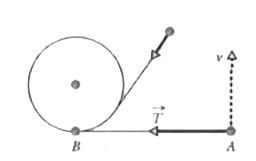
momentum of the particle is constant in the process of motion?
The only force acting on the particle A in this case is the tension →T of the thread. It is easy to see that there is no point here relative to which the torque of the tension is always zero. Therefore, there is no point relative to which the angular momentum of the particle would be constant. The tension acting on the particle is along the string. Thus, any point lying on the line of string, will have zero torque due to tension, about itself. Since particle is moving, this line keeps on changing.
This example illustrates that sometimes a point relative to which the angular momentum of a particle is constant cannot be found at all.
Topper's Solved these Questions
- BOOK - RESNICK AND HALLIDAYCHAPTER - RIGID BODY DYNAMICS - IEXERCISE - CHECKPOINT18videos
RIGID BODY DYNAMICS - I
- BOOK - RESNICK AND HALLIDAYCHAPTER - RIGID BODY DYNAMICS - IEXERCISE - PROBLEMS100videos
RIGID BODY DYNAMICS - I
- BOOK - RESNICK AND HALLIDAYCHAPTER - RELATIVITYEXERCISE - PRACTICE QUESTIONS (Integer Type)5videos
RELATIVITY
- BOOK - RESNICK AND HALLIDAYCHAPTER - RIGID BODY DYNAMICS-IIEXERCISE - PRACTICE QUESTIONS (Integer Type)2videos
RIGID BODY DYNAMICS-II
Similar Questions
A horizontal plane supports a stationary vertical cylinder of radius R and a disc A attached to the cylinder by a horizontal thread AB of length l0 (figure, to view). An initial velocity v0

is imparted to the disc as shown in the figure. How long will it move along the plane until it strikes against the cylinder? The friction is assumed to be absent.View SolutionA particle is moving in a horizontal uniform circular motion. The angular momentum of the particle is conserved about the point :
View Solution
Knowledge Check
- Question 1 - Select One
A particle P is moving along a straight line as shown in the figure. During the motion of the particle from A to B the angular momentum of the particle about O
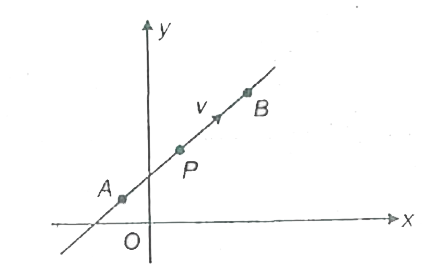 AIncreasesBDecreasesCRemains constantDFirst increases and then decreases
AIncreasesBDecreasesCRemains constantDFirst increases and then decreases - Question 2 - Select One
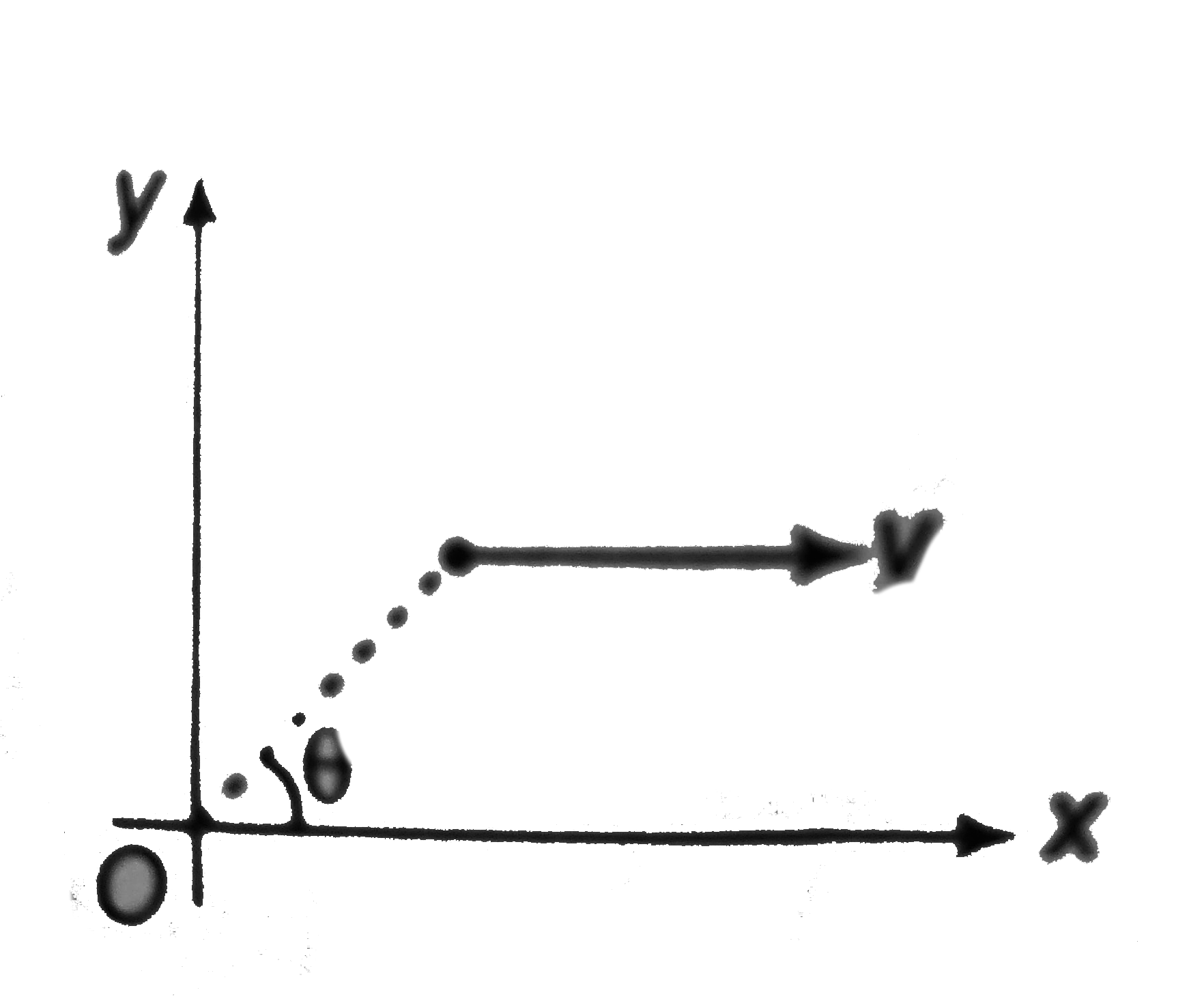
A particle mass parallel to x-axis with constant velocity v as shown in the figure. The angular velocity of the particle about the origin OAremains constantBcontinuously increasesCcontinuously decreasesDoscillates. - Question 3 - Select One or More
A horizontal plane supports a fixed vertical cylinder of radius R and a particle is attached to the cylinder by a horizontal thread AB as shown in Fig. The particle initially rest on a horizontal plane. A horizontal velocity v0 is imparted to the particle, normal to the threading during subsequent motion. Point out the false statements:
 AAngular momentum of particle about O remains constant.BAngular momentum about B remains constantCMomentum and kinetic energy both remain constant.DKinetic energy remains constant
AAngular momentum of particle about O remains constant.BAngular momentum about B remains constantCMomentum and kinetic energy both remain constant.DKinetic energy remains constant
A particle undergoes uniform circular motion. About which point on the plane of the circle, will the angular momentum of the particle remain conserved?
View SolutionA particle is moving with constant speed v in xy plane as shown in figure. The magnitude of its angular velocity about point O is
 View Solution
View SolutionA projectile is projected with a velocityv0 at an angle θ with the horizontal as shown in figure. The angular momentum of particle about the origin:
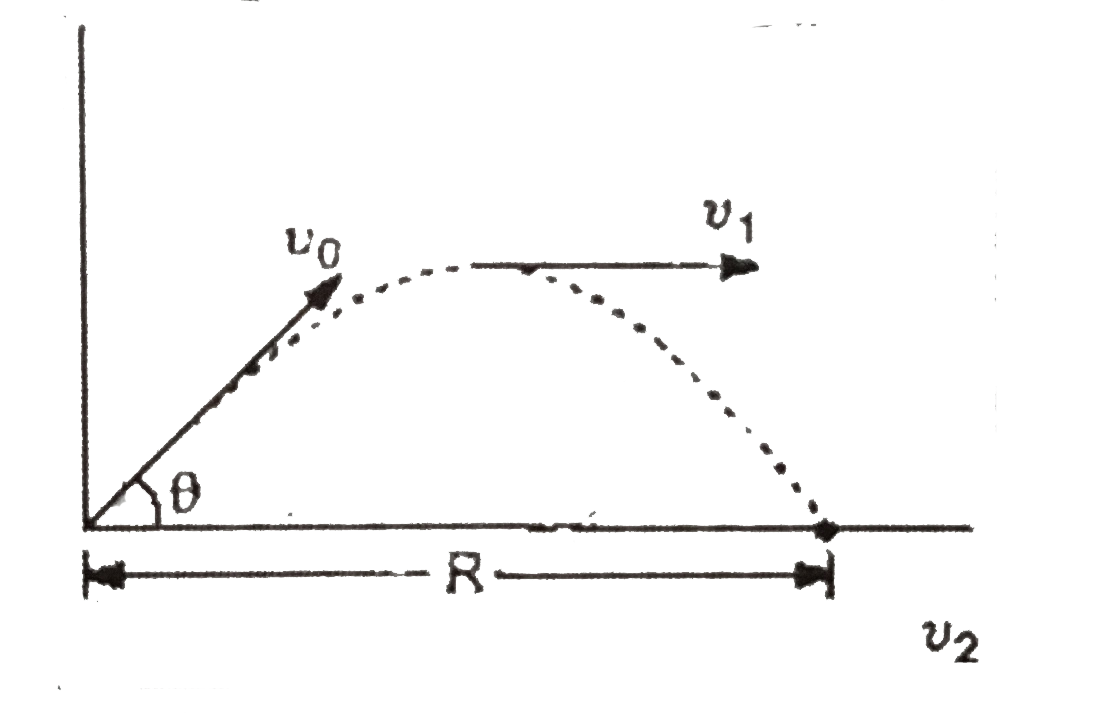 View Solution
View SolutionA particle of mass m is moving with constant velocity v parallel to the x-axis as shown in the figure. Its angular momentum about origin O is
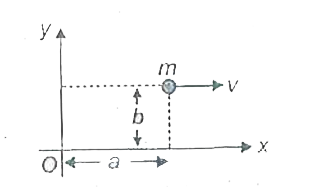 View Solution
View SolutionA particle undergoes uniform circular motion. About which point on the plane of the circle, will the angular momentum of the particle remain conserved?
View Solution

